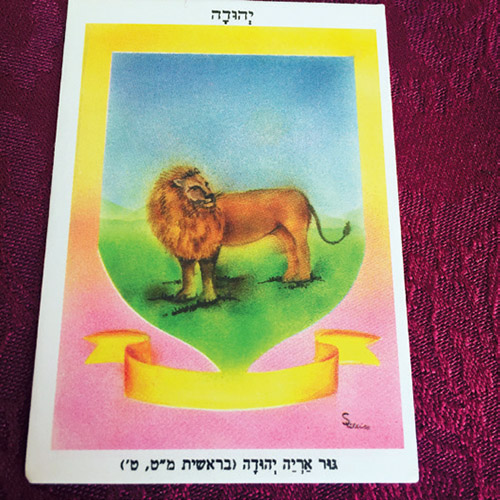


Torah Cards, once almost as ubiquitous in Jewish day schools as Cabbage Patch Dolls were for the general market, are celebrating their quarter-century anniversary this year. Its creator, Avrumi Gross of Teaneck, took a trip down memory lane as he related how it all began.
“It was a rainy Shabbos morning. I let my son, Eliezer, who was about 10 at the time, stay home from shul. He had several hundred baseball cards and was arranging players by position—all the first basemen going into one pile, second basemen into another and so on. He then arranged them by team. I was about to go to shul when I saw him arranging the cards in yet another way. When I asked about it, he explained that he was doing each grouping by birthday. Piles were now arranged by month, those born in January, those born in February… Surprised at what he told me, I decided to test him. He didn’t peek at the backs of the cards, but just by looking at players’ faces he was able to remember when they had been born pretty well.”
Immediately after, before Gross left for shul, he reported what had happened to his wife. He was amazed at his son’s detailed knowledge of each player. He continued, “If we did the same thing by producing Torah cards, kids could then memorize all these Torah facts. Why not remember Torah?” Gross had already made up his mind, telling her “We did our market research on Shabbos morning. After Shabbos, we got to work.”
And so it began. However, like with most new ventures, the devil is in the details.
Gross defined his target market as any child who could learn from the cards, but it was essentially for those in first grade through middle school. As for distribution, he explained that it wasn’t like today where you can instantaneously determine the most viable geographic pockets through an internet search. Back then, he bought tour books, poured through seforim store guides, and used other time-consuming methods for determining where to market his cards. “We did it, but it was difficult.”
Initially, Gross was hesitant to share the idea with others for fear they would run with it themselves. Then came what he is convinced was anything but a chance meeting with a rav from israel. the rav had just missed a Mincha minyan on 47th Street in Manhattan. Gross’s office was nearby, so he offered the rav a place to daven. They spoke afterwards, with Gross feeling comfortable enough to discuss the venture and inquire whether the rav knew of an artist to design the cards. Long story short, the rav’s sister was an artist and her husband a printer.
Torah cards made their debut in 1992, written locally by Gross with the help of a researcher, writer and editor, then printed in Israel. They include eight series, from aleph to ches, with 55 cards per series. Topics include famous Jewish figures, events, prayers and customs, with each subject researched and vetted by a group of learned individuals, then finally shown to what Gross described as a “Rabbi’s Rabbi” who made the final determination as to which facts were worthy enough to be included on the topic in the limited space available.
The concept quickly took off, with distribution in bookstores, schools and shuls throughout the U.S., as well as in Israel, the United Kingdom, Australia and other international locations. He noted that Lubavitch was a good source for him. When asked, Gross was hesitant to reveal how many cards were sold at the peak, but did offer a story to provide some context. The prominent Hebrew book store Eichler’s had ordered a case, which consists of 960 packs. Gross delivered it to the store on a Wednesday. The following Saturday night he received a call that they needed him to stop by immediately to restock.
I can personally attest to the early popularity of the cards. My son, Jeffrey, was an avid collector while in fourth grade. He’d spend hours organizing and reviewing them at home, and trading them in school. They really did accomplish Gross’s purpose of teaching kids Torah in an exciting, memorable manner. Once, when a new series came out, it was arranged that we’d pick it up from the source on a Saturday night. There was a driving snowstorm that day, but my son wasn’t to be denied.
Although sales are long past their peak, Torah Cards continue to have staying power. Judaica House in Teaneck still stocks them. In a conversation with employee Edan Nayowitz, he said there are certain teachers and schools who buy them on a regular basis, and specifically mentioned Chana Reichman, Rebbetzin from the East Hills Synagogue in Englewood, as a catalyst in keeping the interest level alive.
Honny Aron, a first-grade teacher at Rosenbaum Yeshiva of North Jersey, explained how she came across a number of the cards about a half dozen years ago while cleaning out a drawer. She now uses them extensively as giveaways to keep her students engaged. She described it as a “fun, educational way” to learn Torah, and referred to Gross as “a local hero.”
Times are changing and Gross shared one story regarding the cards that is cause to reflect. He explained that when the cards were first introduced, he would carry packs with him and occasionally walk up to youngsters and hand them one. “The reaction would always be a smile and a thank you.” Today, more and more, the smile has been replaced by a wary look, with the child often refusing the gift. Gross chalked it up to children these days being taught to avoid engaging in conversation with strangers, which is prudent, but sad at the same time.
By Robert Isler
Robert Isler is a marketing researcher and writer who lives in Fair Lawn. He can be reached at robertisler23@gmail.com.











